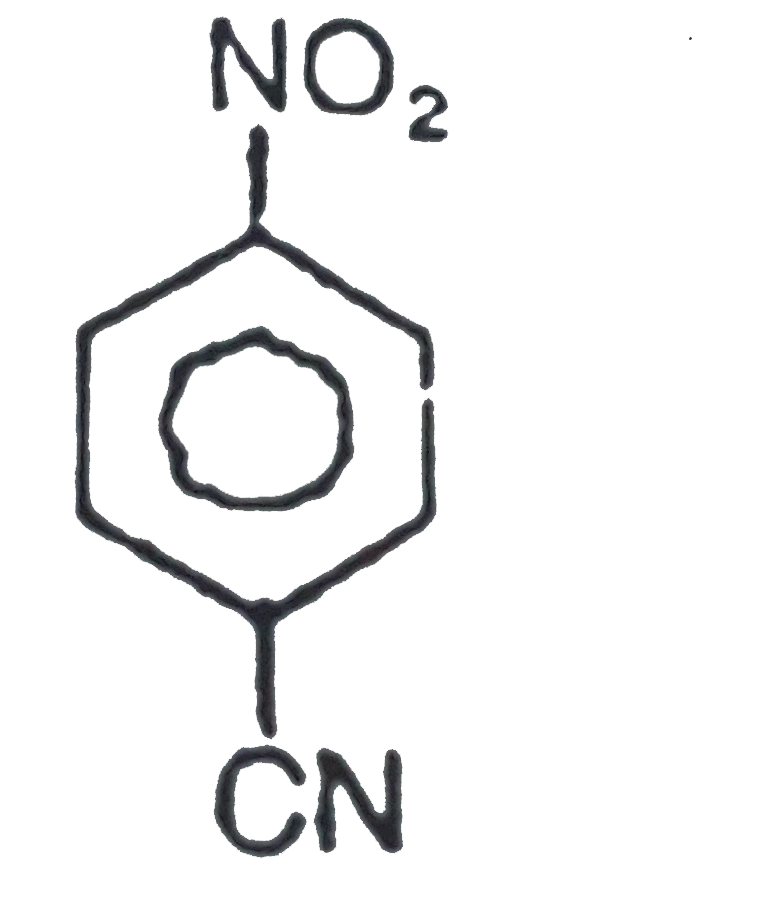True or False?
An electron donating substituent in benzene orients the incoming electrophilic group to the meta-position.
To determine whether the statement "An electron donating substituent in benzene orients the incoming electrophilic group to the meta-position" is true or false, we can analyze the effects of electron donating groups on the electrophilic aromatic substitution mechanism.
1. Understanding the Statement: The statement suggests that an electron donating substituent directs incoming electrophiles to the meta-position on the benzene ring.
2. Identify Electron Donating Groups: Common electron donating groups (EDGs) include -OH, -NH2, -OCH3, etc. These groups donate electron density to the aromatic ring.
3. Resonance Structures: When an EDG is attached to the benzene ring, it increases electron density at certain positions on the ring due to resonance. For example, consider an aniline molecule (C6H5-NH2):
- The lone pair of electrons on the nitrogen can be delocalized into the benzene ring, creating resonance structures that enhance electron density at the ortho (adjacent) and para (opposite) positions.
4. Analyzing the Positions:
- In the case of aniline, the resonance structures show that the ortho and para positions become more electron-rich compared to the meta position. This means that an incoming electrophile is more likely to attack at the ortho or para positions rather than the meta position.
5. Conclusion: Since the electron donating substituent increases electron density at the ortho and para positions, the statement that it orients the incoming electrophilic group to the meta-position is incorrect. Therefore, the statement is False.
Final Answer:
The statement is False.
---
- The lone pair of electrons on the nitrogen can be delocalized into the benzene ring, creating resonance structures that enhance electron density at the ortho (adjacent) and para (opposite) positions.
- In the case of aniline, the resonance structures show that the ortho and para positions become more electron-rich compared to the meta position. This means that an incoming electrophile is more likely to attack at the ortho or para positions rather than the meta position.
The statement is False.
Topper's Solved these Questions
- AROMATIC COMPOUNDS AND ALKYL AND ARYL HALIDES Book:CENGAGE CHEMISTRY ENGLISHChapter:AROMATIC COMPOUNDS AND ALKYL AND ARYL HALIDES Exercise:Archives Assertion-Resoning
Explore 3 Videos
- AROMATIC COMPOUNDS AND ALKYL AND ARYL HALIDES Book:CENGAGE CHEMISTRY ENGLISHChapter:AROMATIC COMPOUNDS AND ALKYL AND ARYL HALIDES Exercise:Archives Subjective
Explore 18 Videos
- AROMATIC COMPOUNDS AND ALKYL AND ARYL HALIDES Book:CENGAGE CHEMISTRY ENGLISHChapter:AROMATIC COMPOUNDS AND ALKYL AND ARYL HALIDES Exercise:Archives Mutiple Correct Answers Type
Explore 1 Video
- APPENDIX INORGANIC VOLUME 2Book:CENGAGE CHEMISTRY ENGLISHChapter:APPENDIX INORGANIC VOLUME 2Exercise:Short Answer Type
Explore 179 Videos
- BIOMOLECULESBook:CENGAGE CHEMISTRY ENGLISHChapter:BIOMOLECULESExercise:Exercises Archives (Analytical And Descriptive)
Explore 8 Videos
Similar Questions
Why does a m-directing group direct the incoming group towards the m-position ?
View SolutionThe general electrophilic substitution reaction (replacement of H. by an electrophilic which is an electron deficient species) in aromatic ring is represented as followed.

An electrophilic attacks on ortho and para positions which respect to a stronger +m group are present in benzene ring and the electrophilie attacks at meta position with respect to stronger -m group if two -m groups are present in benzene ring.
What will be the product when electrophile Br⊕ attacks on
View Solution
Knowledge Check
Assertion: The second substituent may enter the mono-substituted benzene ring at either ortho, para or at meta position.
Reason: The position of the incoming group is determined by the natrue fo the group present in monosubstituted benzene ring.AIf both assertion and reson are true and reason is the correct explanation of assertionBIf both assertion and reason are true but reason is not the correct explanation of assertion.CIf assertion is true but reason is false.DIf both assertion and reason are false.
The general electrophilic substitution reaction (replacement of H. by an electrophilic which is an electron deficient species) in aromatic ring is represented as followed.

An electrophilic attacks on ortho and para positions which respect to a stronger +m group are present in benzene ring and the electrophilie attacks at meta position with respect to stronger -m group if two -m groups are present in benzene ring.
The product of the following reaction is

View SolutionExplain the fact that in aryl ethers, (i) the alkoxy group activates the benzene ring towards electrophilic substitution and (ii) it directs the incoming substituents to ortho and para positions in benzene ring.
View SolutionThe typical reaction of benzene and other aromatic compounds are electrophilic substitution. Presence of electron donating group activates the ring towards electrophilic substitution, while presence of electron withdrawing group deactivates the ring towards electrophilic substituion but at the same time activates the ring towards nucleophilic subsituion. Some groups are predominantly meta-directing and all of these are deactivating. Except halogen, most of the o−andp−directing groups are activating groups.
_E01_246_Q01.png) C2H5Cl.AlCl3−−−−−−−−→Δ(A) major.
C2H5Cl.AlCl3−−−−−−−−→Δ(A) major.
A is trisubstituted benzene. The structure of A is :
View SolutionThe typical reaction of benzene and other aromatic compounds are electrophilic substitution. Presence of electron donating group activates the ring towards electrophilic substitution, while presence of electron withdrawing group deactivates the ring towards electrophilic substituion but at the same time activates the ring towards nucleophilic subsituion. Some groups are predominantly meta-directing and all of these are deactivating. Except halogen, most of the o−andp−directing groups are activating groups.
_E01_246_Q01.png) C2H5Cl.AlCl3−−−−−−−−→Δ(A) major.
C2H5Cl.AlCl3−−−−−−−−→Δ(A) major.
A is trisubstituted benzene. The structure of A is :
View SolutionIn an electrophilic aromatic substitution reaction, the nitro group is meta directing because of it?
View SolutionAlthough chlorine is an electron withdrawing group, yet it is ortho-, para- directing in electrophilic aromatic substitution reactions. Why?
View SolutionAlthrough chlorine is an electron withdrawing group, yet it is ortho-para-directing in electrophilic aromatic substitution reactions. Explain why it is so ?
View Solution